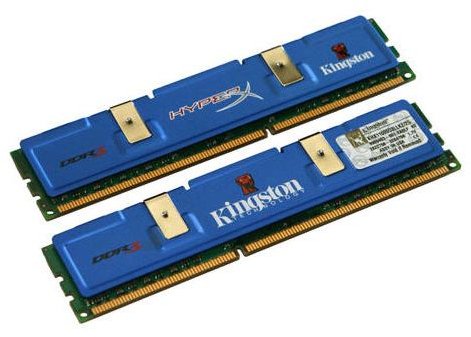How Much Memory Will Windows 7 Need? Operating Systems and Memory Footprints
Why All the Fuss?
Almost everything you read about Windows 7 contains some blurb about the supposed reduced memory footprint of the operating system (find out how to install Windows 7 on your own system). Without going into speculation about whether or not Windows 7 will be able to prove these claims, let’s take a look at why memory footprints are such a hot topic right now.
What is a Memory Footprint?
In a nutshell, the memory footprint of any program is simply the amount of memory the software uses while it’s in operation. While this is an important thing to be aware of for any piece of software, it’s doubly so for an operating system. After all, you can’t just kill the operating system to free up extra memory. Sure, there are things you can do that may reduce the amount of memory that an operating system is using, but there is a bare minimum that it’s always going to tie up.
Why Not Just Buy More Memory?
Memory is cheap nowadays, so why worry about how much memory an operating system uses when you can just buy more? Well, for one thing, the term “cheap” is relative. Memory may cost a whole lot less than it used to, but it’s still not exactly free. Even if the nation wasn’t in an economic crunch right now, I still don’t want to be tossing around $50 here and $50 there. Plus, there are some physical limitations that most of us have to deal with here.
With the move from a 32-bit to a 64-bit operating system, you certainly can theoretically handle a lot more memory. In fact, these theoretical limits (up to 16 exabytes) are so large that we may as well consider them virtually unlimited for the majority of computer users in the world. You know what? I love theory. Theory is great. But, it doesn’t build bridges, and it sure doesn’t make extra memory stick slots appear on your motherboard.
On top of that, each operating system has its own limits as to how much RAM it can handle. Despite the monstrous theoretical limits of 64-bit systems, Windows Vista Home Premium can only access up to 16 GB of RAM.
Isn’t 16 GB of RAM Still a Lot?

While the system requirements for 64-bit versions of Vista lists 1 GB of RAM as minimum, 4 GB is recommended. This is where I begin to get a little concerned since the recommended requirements are actually starting to exceed the maximum amount of RAM recognized in previous Windows versions. Even though most of these previous versions were 32-bit, this is still a big jump.
In the past, the trend has always been that each successive Windows OS required larger and larger amounts of system resources. Thus, Microsoft’s claim that Windows 7 is going to buck that trend is giving people some high hopes. At this point, while Windows 7 is still in pre-beta, there is still some debate surrounding the question of whether or not the operating system will be able to live up to these promises. We’ll keep watching, though, with our fingers crossed.
Update - Windows 7 Memory Requirements
Since the time this article was first published, Windows 7 has been officially released and Microsoft has announced the memory requirements. Basically, Microsoft recommends a minimum of 1 GB of RAM for 32-bit versions of the operating system and a minimum of 2 GB for 64-bit versions. If you plan on taking advantage of the Windows XP Mode feature, you should bump those requirements up to include an additional 1 GB of RAM.
One of the big differences here is that Microsoft’s recommendations for Windows 7 seem to be a lot more realistic than the ones given for Vista. That is, with Vista, most people needed much more than the minimum requirements stated for the OS to run properly. With Windows 7, the stated requirements seem adequate. However, you’re still much better off if you have 4 GB of RAM, especially if you’re running a 64-bit version.
Will Windows 7 run on less? The user community says yes – Windows 7 can boot up in systems with less RAM, but remember that there is a difference between just being able to boot your PC and actually being able to do anything with it. So, if you actually plan to use any applications and don’t want your system to slow to a crawl, it’s best not to try to scrape by with less than the minimum.
